Find out the Vegetables You Can Grow in Water from cuttings or scraps that will provide you with a regular harvest at no cost.
If you’re looking for a fun and easy way to get a fresh veggie fix, then here are delicious Vegetables You Can Grow in Water! Not only is it a fun and rewarding activity, but it’s surprisingly easy to do and you don’t need a lot of space or specialized equipment to get started!
Onion Greens
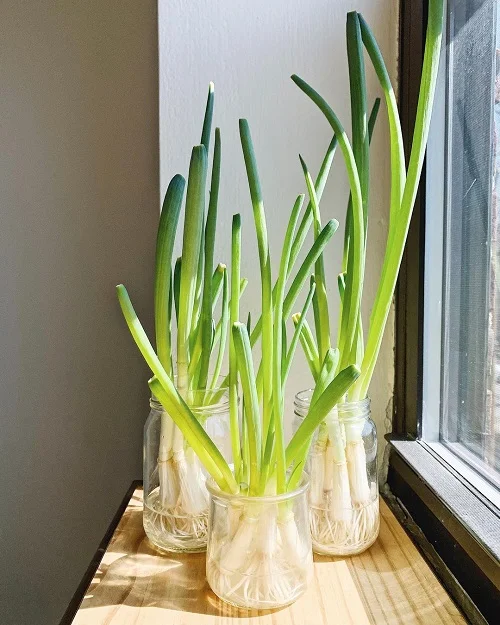
Botanical Name: Allium Cepa
You can easily regrow scallions in water. To do this, cut off the root end of the scallion leaving an inch or two of the white and light green parts. Place the stems in a glass of water and place it in a sunny spot.
Change the water every few days and you should see new roots starting to form within a week. Once the roots are an inch or two long, transplant them into a pot of soil, or continue to keep them in water and enjoy the fresh onion greens for a few weeks.
Carrot Greens
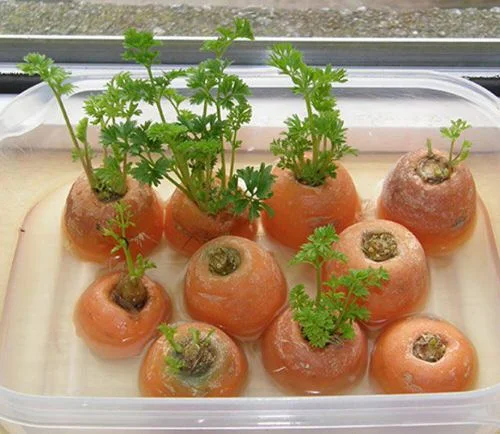
Botanical Name: Daucus Carota Subsp. Sativus
Start with a container of clean water. Place the carrot tops, making sure to keep the cut side facing down. Change the water every 3-5 days and keep the container in a sunny location. The greens should start to sprout in about a week.
Carrot greens can be cooked like spinach, added to soups or stews, or used as a flavorful garnish. They can also be used in pesto or blended into smoothies.
Celery
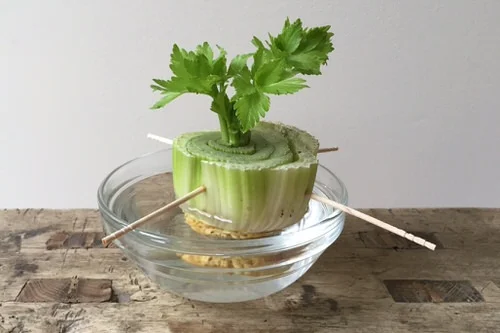
Botanical Name: Apium Graveolens
Cut off the base of the celery and remove any of the outer leaves. Then, place it in a jar or container filled with water, making sure that the base is completely submerged.
Keep the jar in a sunny spot and change the water every few days. After a few weeks, you should see new leaves growing from the base of the celery.
Bok Choy
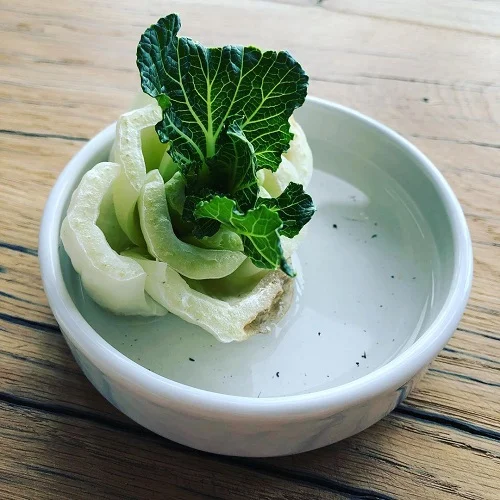
Botanical Name: Brassica Rapa Subsp, Chinensis L.
Start by cutting off the bottom of the Bok Choy where the roots are still attached. Place the stump in a shallow bowl filled with water and make sure the roots are submerged.
Keep the bowl in a spot that receives indirect sunlight, such as a windowsill or countertop. Change the water every few days to keep it fresh. The Bok Choy should start to regrow in 1-2 weeks.
Leeks
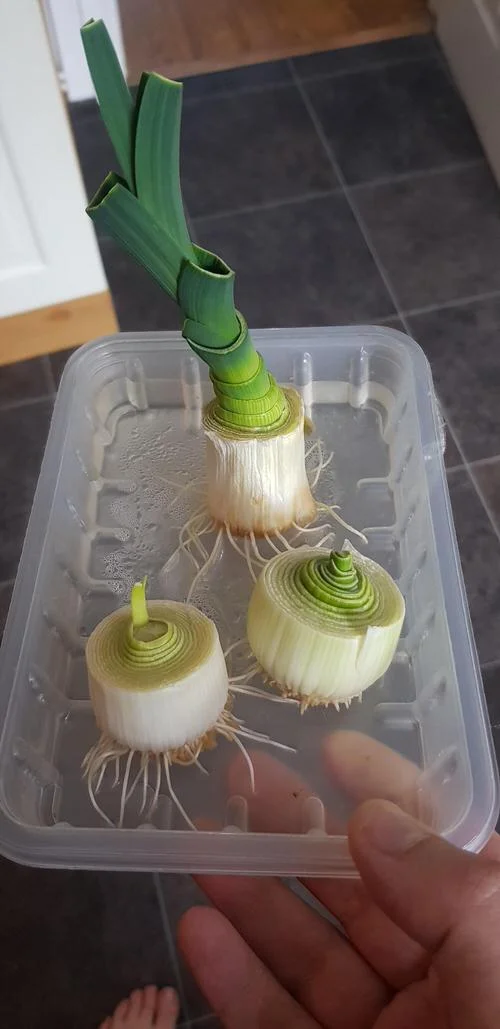
Botanical Name: Allium Ampeloprasum Var. Porrum
Leeks can be grown in water, although it is not the most preferred method. To do so, cut off the root end and the top of the leek and place the stalk in a glass or jar of water.
The water should be changed every few days. The leek will continually sprout and grow.
Beet Greens
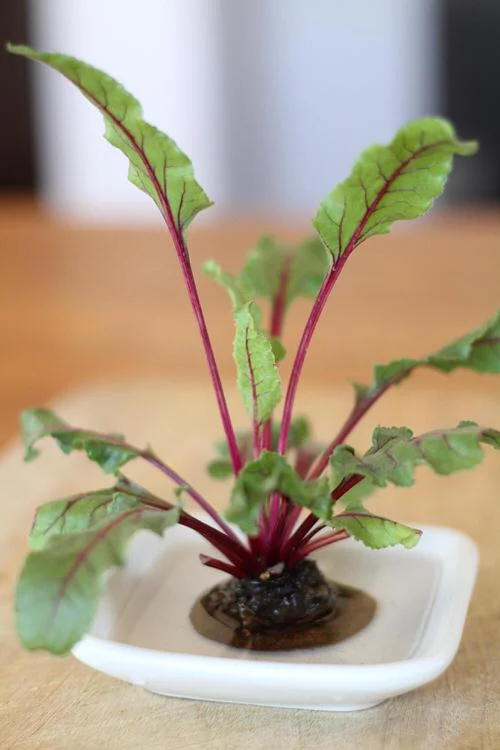
Botanical Name: Beta Vulgaris
Cut the tops off the beetroots and place them in a shallow bowl of water. Keep the bowl in a sunny spot. Change the water every few days and within a few weeks, you should see new leaves and roots growing!
Cabbage
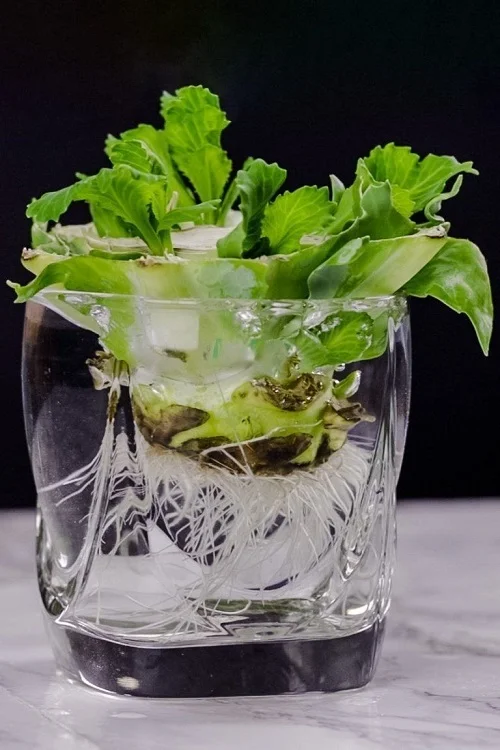
Botanical Name: Brassica Oleracea Var. Capitata
Cut the bottom part of the cabbage heads and place them in a shallow dish filled with water. Change the water every 3-5 days. The cabbage may take up to three months to mature and can be harvested when the leaves are fully developed.
Note: Cabbage can be grown in water, but it requires a good amount of patience and effort.
Garlic Greens
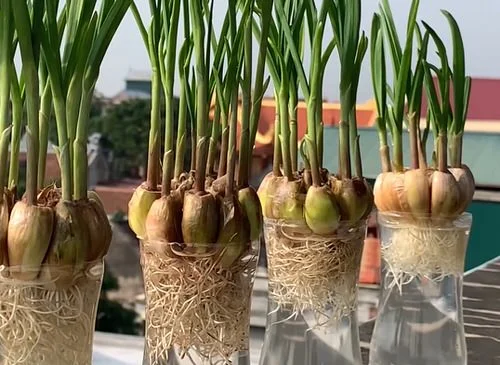
Botanical Name: Allium sativum var. sativum
You will need to start by placing the cloves in a shallow bowl with a few inches of water. Change the water every few days to keep it fresh.
Place the jar in a sunny spot and in a few days, you should start to see green shoots emerging. The cloves will also form roots as shown in the picture above. Harvest the leaves and use them raw in salads, or soups, stir-fries, and side dishes. They can be used to add a zesty flavor to sandwiches and wraps or to give a savory kick to omelets and egg dishes!
Argula

Arugula can be grown in water in a process known as hydroponics. To do this, you will need hydroponic growing media such as perlite, vermiculite, rock wool, or coco coir, as well as a container with a lid, a water pump, and a nutrient solution.
Fill the container with the hydroponic growing media, and then fill it with water. Place the arugula seeds in the growing media, and then cover the container. Place the water pump in the water, and then add the nutrient solution. Leave the lid on the container, and then wait for the arugula to germinate.
Once germination has occurred, adjust the nutrient solution as required, and then check the water levels every few days. When the arugula is ready to harvest, simply remove it from the hydroponic growing media, and enjoy!
Mustard Microgreens

To get started, you’ll need a shallow container, such as a plastic tray or shallow bowl, that act as the vessel for the water. Fill the tray or bowl with enough water to cover the bottom. Next, scatter a few mustard microgreen seeds over the surface of the water.
Make sure the seeds are evenly distributed. Once the seeds are spread out, cover the tray or bowl with a lid and place it in a warm, sunny spot. After a few days, you should begin to see the seeds sprout and grow.
Once the mustard microgreens are a few inches tall, you can harvest them. To do this, simply snip them off at the stem and enjoy.
Lettuce
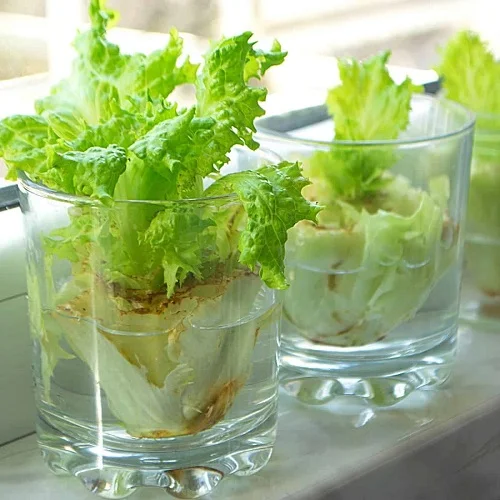
To regrow lettuce from a stump in water, begin by cutting the lettuce 1 inch above the base and removing any remaining leaves. Place the stump in a shallow bowl of water, ensuring that the water covers the bottom of the root ball.
Keep the bowl in a sunny spot and change the water every other day. After a few days, the stump will begin to sprout new leaves. Use as per requirement!
